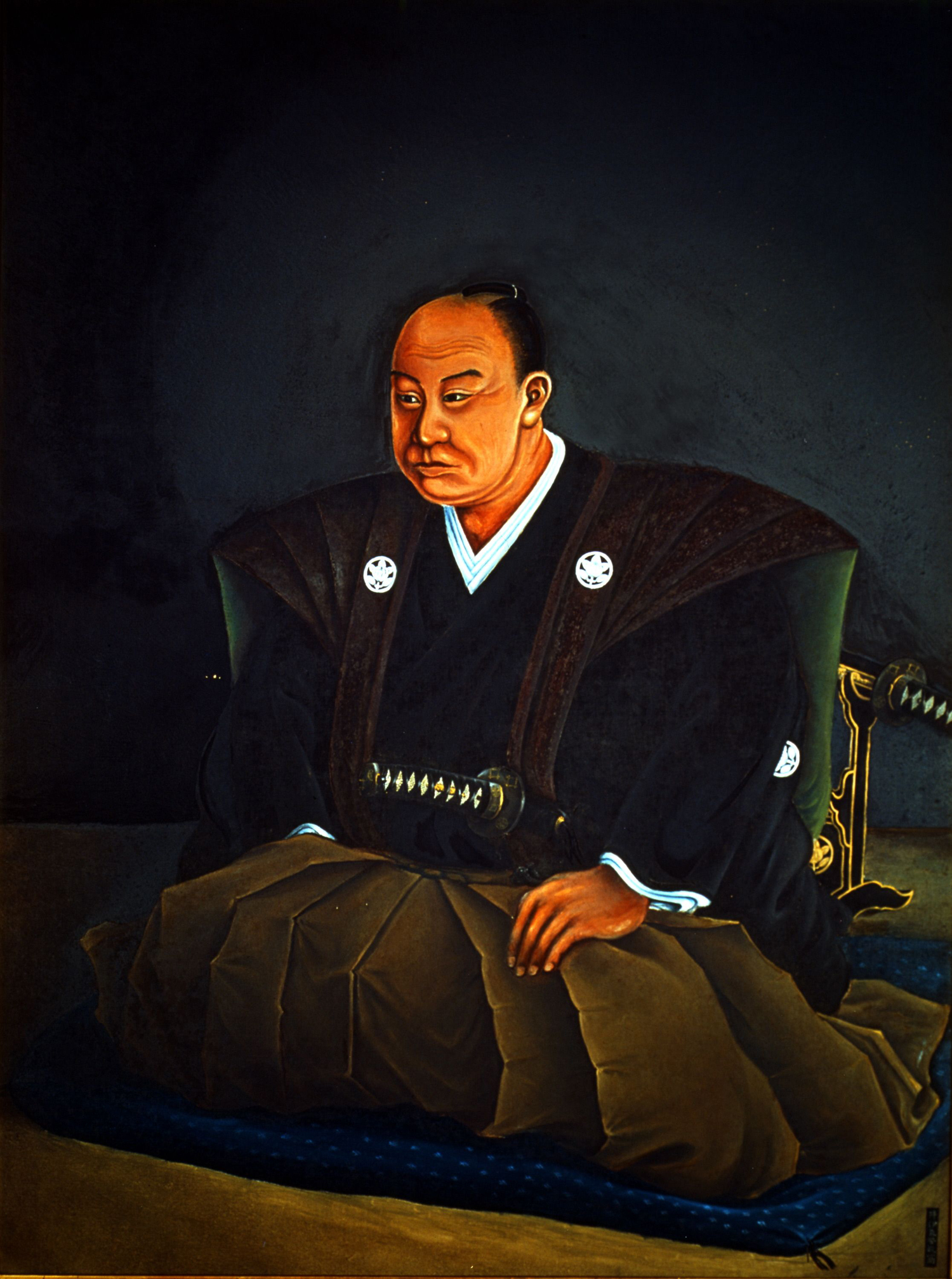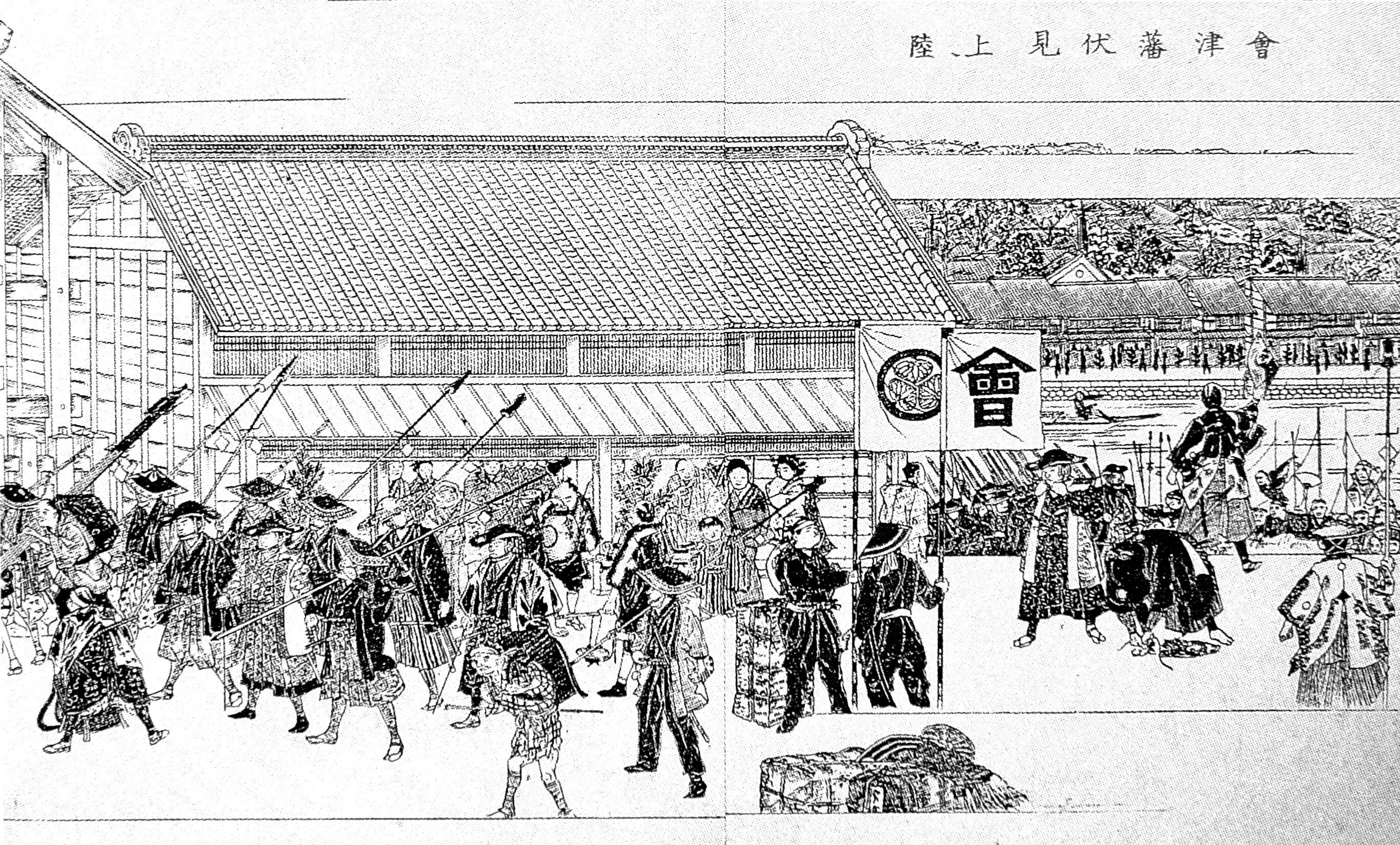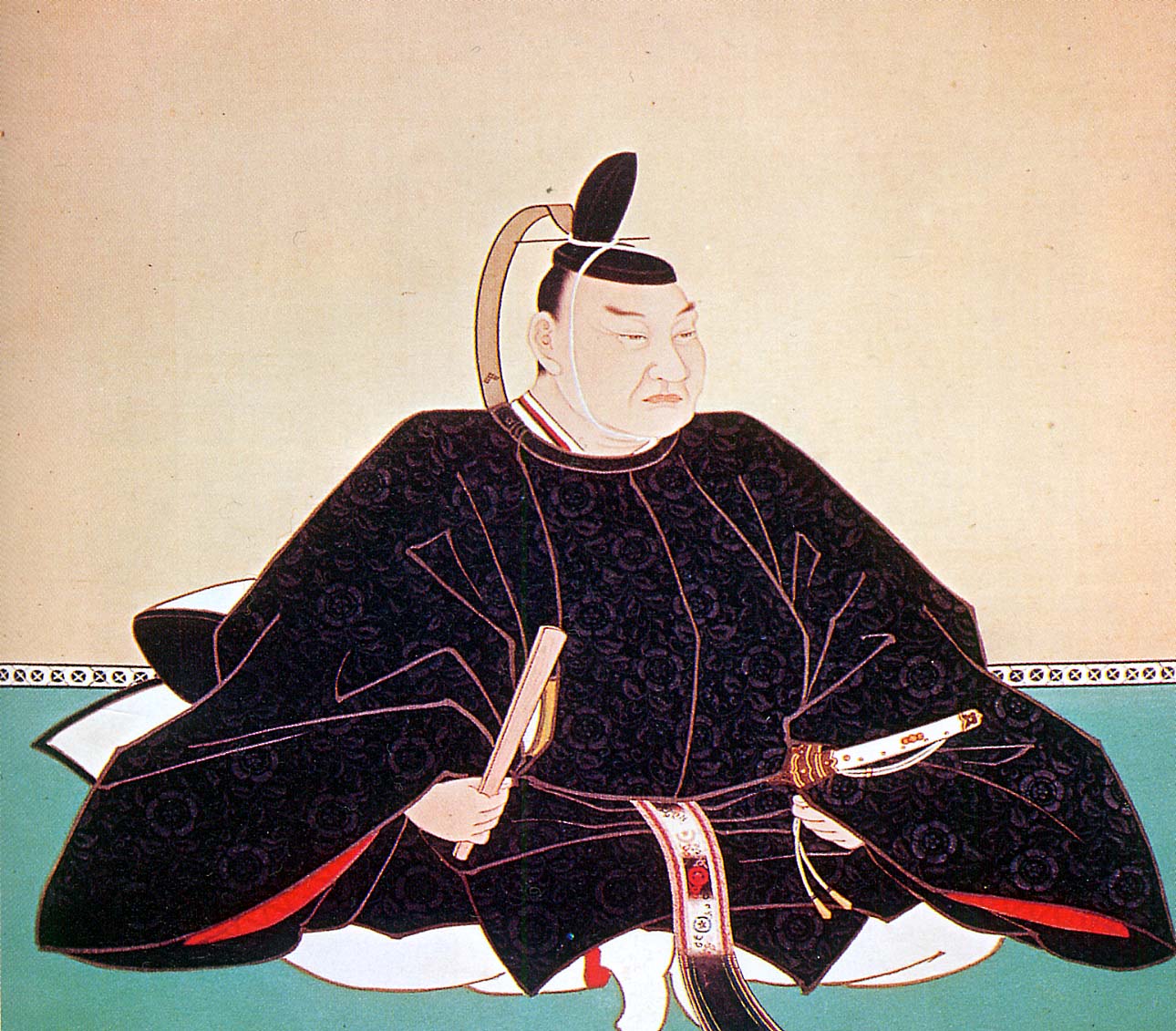|
Manabe Akikatsu
was the 7th ''daimyō'' of Sabae Domain in Echizen Province under the Tokugawa shogunate of Edo period Japan.Meyer, Eva Maria. (1999) ''Japans Kaiserhof in der Edo-Zeit'', p. 146 His courtesy title was ''Shimōsa-no-kami'', and his Court rank was Junior Fifth Rank, Lower Grade, later raised to Junior Fourth Rank, Lower Grade. He was the 8th hereditary chieftain of the Manabe clan. Biography Akikatsu was born at the Sabae Domain's Edo residence as the fifth son of Manabe Akihiro. He became ''daimyō'' on the death of his uncle Manabe Akisane in 1814. Under Shōgun Tokugawa Ieharu he served in a variety of positions in the Tokugawa shogunate, including '' Sōshaban'', '' Jisha-bugyō'', '' Osaka jōdai'', ''Kyoto Shoshidai'' and became ''rōjū'' in 1840. However, due to political disagreements with Mizuno Tadakuni, he was forced from office in 1843. In 1858, he was restored to the post of ''rōjū'' by the ''Tairō'' Ii Naosuke, and quickly was seen as Ii's right-hand man, t ... [...More Info...] [...Related Items...] OR: [Wikipedia] [Google] [Baidu] |
Manabe Akihiro
was a feudal domain under the Tokugawa shogunate of Edo period Japan. Papinot, Jacques Edmond Joseph. (1906). ''Dictionnaire d'histoire et de géographie du Japon''; Papinot, (2003). It was based at Sabae '' Jin'ya'' in Echizen Province in what is now part of modern-day Sabae, Fukui. It was ruled for all of its history by the Manabe clan. History In 1721, the ''daimyō'' of Murakami Domain in Echigo Province, Manabe Akitoki was transferred to a newly created fief with a ''kokudaka'' of 50,000 ''koku'' centered in Sabae. Akitoki's elder brother was a ''sōbayonin'' to Shōgun Tokugawa Ienobu, with great influence over the shōgun, and his successor Tokugawa Ietsugu. However, under Tokugawa Yoshimune he was purged from office and the Manabe clan fell from favour. Manabe Akitoki's relocation was part of this punitive action - although the new domain had the same nominal ''kokudaka'', it was located close to the eyes of Fukui Domain and extensive ''tenryō'' lands and was not ra ... [...More Info...] [...Related Items...] OR: [Wikipedia] [Google] [Baidu] |
Ii Naosuke
was '' daimyō'' of Hikone (1850–1860) and also Tairō of the Tokugawa shogunate, Japan, a position he held from April 23, 1858, until his death, assassinated in the Sakuradamon Incident on March 24, 1860. He is most famous for signing the Harris Treaty with the United States, granting access to ports for trade to American merchants and seamen and extraterritoriality to American citizens. He was also an enthusiastic and accomplished practitioner of the Japanese tea ceremony, in the Sekishūryū style, and his writings include at least two works on the tea ceremony. Under Ii Naosuke’s guidance, the Tokugawa shogunate navigated past a particularly difficult conflict over the succession to the ailing and childless Tokugawa Iesada. Ii Naosuke managed to coerce the Tokugawa shogunate to the last brief resurgence of its power and position in Japanese society before the start of the Meiji period. Ii was assassinated in the Sakuradamon incident by a group of 17 Mito and 1 ... [...More Info...] [...Related Items...] OR: [Wikipedia] [Google] [Baidu] |
Aizu Domain
was a domain of the Tokugawa Shogunate of Japan during the Edo period from 1601 to 1871.Ravina, Mark. (1998) ''Land and Lordship in Early Modern Japan,'' p. 222 The Aizu Domain was based at Tsuruga Castle in Mutsu Province, the core of the modern city of Aizuwakamatsu, located in the Tōhoku region of the island of Honshu. The Aizu Domain was ruled for most of its existence by the ''shinpan'' '' daimyō'' of the Aizu-Matsudaira clan, a local cadet branch of the ruling Tokugawa clan, but was briefly ruled by the '' tozama'' ''daimyō'' of the Gamō and Katō clans. The Aizu Domain was assessed under the ''Kokudaka'' system with a peak value of 919,000 ''koku'', but this was reduced to 230,000 ''koku''. The Aizu Domain was dissolved in the abolition of the ''han'' system in 1871 by the Meiji government and its territory was absorbed into Fukushima Prefecture, covering much of the traditional region of Aizu. History Pre-Edo period The area of Kurokawa, later called " ... [...More Info...] [...Related Items...] OR: [Wikipedia] [Google] [Baidu] |
Meiji Government
The was the government that was formed by politicians of the Satsuma Domain and Chōshū Domain in the 1860s. The Meiji government was the early government of the Empire of Japan. Politicians of the Meiji government were known as the Meiji oligarchy, who overthrew the Tokugawa shogunate. Early developments After the Meiji Restoration, the leaders of the ''samurai'' who overthrew the Tokugawa shogunate had no clear agenda or pre-developed plan on how to run Japan. They did have a number of things in common; according to Andrew Gordon, “It was precisely their intermediate status and their insecure salaried position, coupled with their sense of frustrated ambition and entitlement to rule, that account for the revolutionary energy of the Meiji insurgents and their far-reaching program of reform”. most were in their mid-40s, and most were from the four '' tozama'' domains of western Japan (Chōshū, Satsuma, Tosa and Hizen). Although from lower-ranked ''samurai'' families, ... [...More Info...] [...Related Items...] OR: [Wikipedia] [Google] [Baidu] |
Kokudaka
refers to a system for determining land value for taxation purposes under the Tokugawa shogunate of Edo-period Japan, and expressing this value in terms of '' koku'' of rice. Nussbaum, Louis-Frédéric. (2005)"Koku"in ''Japan Encyclopedia'', p. 549. One 'koku' (roughly equivalent to five bushels) was generally viewed as the equivalent of enough rice to feed one person for a year. The actual revenue or income derived holding varied from region to region, and depended on the amount of actual control the fief holder held over the territory in question, but averaged around 40 percent of the theoretical ''kokudaka''. pp. 14–15. The amount taxation was not based on the actual quantity of rice harvested, but was an estimate based on the total economic yield of the land in question, with the value of other crops and produce converted to their equivalent value in terms of rice. The ranking of precedence of the ''daimyō'', or feudal rulers, was determined in part by the ''kokudaka'' ... [...More Info...] [...Related Items...] OR: [Wikipedia] [Google] [Baidu] |
Sakuradamon Incident (1860)
The was the assassination of Ii Naosuke, Chief Minister (Tairō) of the Tokugawa Shogunate, on March 24, 1860 by ''rōnin'' ''samurai'' of the Mito Domain and Satsuma Domain, outside the Sakurada Gate of Edo Castle. Context Ii Naosuke, a leading figure of the Bakumatsu period and a proponent of the reopening of Japan after more than 200 years of seclusion, was widely criticized for signing the 1858 Treaty of Amity and Commerce with the United States Consul Townsend Harris and, soon afterwards, similar treaties with other Western countries. From 1859, the ports of Nagasaki, Hakodate and Yokohama became open to foreign traders as a consequence of the Treaties. Ii was also criticized for reinforcing the authority of the Tokugawa shogunate against regional ''daimyōs'' through the Ansei Purge. He also made strong enemies in the dispute for the succession of Shōgun Tokugawa Iesada, and because he forced retirement on his opponents, specifically the retainers of Mito, Hizen, ... [...More Info...] [...Related Items...] OR: [Wikipedia] [Google] [Baidu] |
Yoshida Shōin
, commonly named , was one of Japan's most distinguished intellectuals in the late years of the Tokugawa shogunate. He devoted himself to nurturing many '' ishin shishi'' who in turn made major contributions to the Meiji Restoration. Early life Born Sugi Toranosuke in Hagi in the Chōshū region of Japan, he was the second son of Sugi Yurinosuke (1804–1865), a modest rank Samurai and his wife Kodama Taki (1807–1890). Yurinosuke had two younger brothers, Yoshida Daisuke and Tamaki Bunnoshin. Sugi Toranosuke's eldest brother was Sugi Umetarō (1828–1910), his four younger sisters were Sugi Yoshiko (later Kodama Yoshiko) (1832–1924), Sugi Hisa (later Odamura Hisa) (1839–1881), Sugi Tsuya (1841–1843), and Sugi Fumi (later Katori Miwako) (1843–1921), his youngest brother was Sugi Toshisaburō (1845–1876). Sugi Toranosuke was later adopted at the age of four by Yoshida Daisuke and was renamed to Yoshida Shōin. The process of adopting younger sons from the Sugi hous ... [...More Info...] [...Related Items...] OR: [Wikipedia] [Google] [Baidu] |
Kyoto
Kyoto (; Japanese: , ''Kyōto'' ), officially , is the capital city of Kyoto Prefecture in Japan. Located in the Kansai region on the island of Honshu, Kyoto forms a part of the Keihanshin metropolitan area along with Osaka and Kobe. , the city had a population of 1.46 million. The city is the cultural anchor of a substantially larger metropolitan area known as Greater Kyoto, a metropolitan statistical area (MSA) home to a census-estimated 3.8 million people. Kyoto is one of the oldest municipalities in Japan, having been chosen in 794 as the new seat of Japan's imperial court by Emperor Kanmu. The original city, named Heian-kyō, was arranged in accordance with traditional Chinese feng shui following the model of the ancient Chinese capital of Chang'an/ Luoyang. The emperors of Japan ruled from Kyoto in the following eleven centuries until 1869. It was the scene of several key events of the Muromachi period, Sengoku period, and the Boshin War, such as the Ōnin War, ... [...More Info...] [...Related Items...] OR: [Wikipedia] [Google] [Baidu] |
Sonnō Jōi
was a '' yojijukugo'' (four-character compound) phrase used as the rallying cry and slogan of a political movement in Japan in the 1850s and 1860s during the Bakumatsu period. Based on Neo-Confucianism and Japanese nativism, the movement sought to overthrow the Tokugawa shogunate and restore the power of the Emperor of Japan. Etymology During the Spring and Autumn period of China, Chancellor Guan Zhong of Qi initiated a policy known as ''Zunwang Rangyi'' (尊王攘夷 ; lit. "Revere the King, Expel the Barbarians"), in reference to the Zhou kings. Adopting and adhering to it, Duke Huan of Qi assembled the Chinese feudal lords to strike down the threat of barbarians from China. For it, Confucius himself praised Guan Zhong for the preservation of Chinese civilization through the example of the contrast in the hairstyles and clothing styles between them and barbaric peoples. Through the '' Analects'' of Confucius, the Chinese expression came to be transmitted to Japan as ' ... [...More Info...] [...Related Items...] OR: [Wikipedia] [Google] [Baidu] |
Treaty Of Amity And Commerce (United States–Japan)
The , also called the Harris Treaty was a treaty signed between the United States and Tokugawa Shogunate, which opened the ports of Kanagawa and four other Japanese cities to trade and granted extraterritoriality to foreigners, among a number of trading stipulations. It was signed on the deck of the in Edo (now Tokyo) Bay on July 29, 1858. Timeline * July 29, 1858: Treaty and Regulations are signed by the United States and Japan * December 15, 1858: Senate reviews the treaty and consents to ratification * March 19, 1859: Ratified by Japan * July 4, 1859: Entered into force * April 12, 1860: Ratified by the President of the United States * May 22-23, 1860: Ratifications exchanged at Washington and proclaimed by the President * June 25, 1866: Amended through convention * July 25, 1878: Modified by convention * July 17, 1899: Superseded by the treaty of November 22, 1894. The Treaty The treaty followed the 1854 Convention of Kanagawa, which granted coaling rights for Amer ... [...More Info...] [...Related Items...] OR: [Wikipedia] [Google] [Baidu] |
Emperor Kōmei
was the 121st Emperor of Japan, according to the traditional order of succession.Imperial Household Agency (''Kunaichō'')孝明天皇 (121)/ref> Kōmei's reign spanned the years from 1846 through 1867, corresponding to the final years of the Edo period.Meyer, Eva-Maria. (1999) ''Japans Kaiserhof in der Edo-Zeit'', p. 186./ref> During his reign there was much internal turmoil as a result of Japan's first major contact with the United States, which occurred under Commodore Perry in 1853 and 1854, and the subsequent forced re-opening of Japan to western nations, ending a 220-year period of national seclusion. Emperor Kōmei did not care much for anything foreign, and he opposed opening Japan to Western powers. His reign would continue to be dominated by insurrection and partisan conflicts eventually culminating in the collapse of the Tokugawa shogunate shortly after his death and the Meiji Restoration in the beginning of the reign of his son and successor Emperor Meiji. Ea ... [...More Info...] [...Related Items...] OR: [Wikipedia] [Google] [Baidu] |







